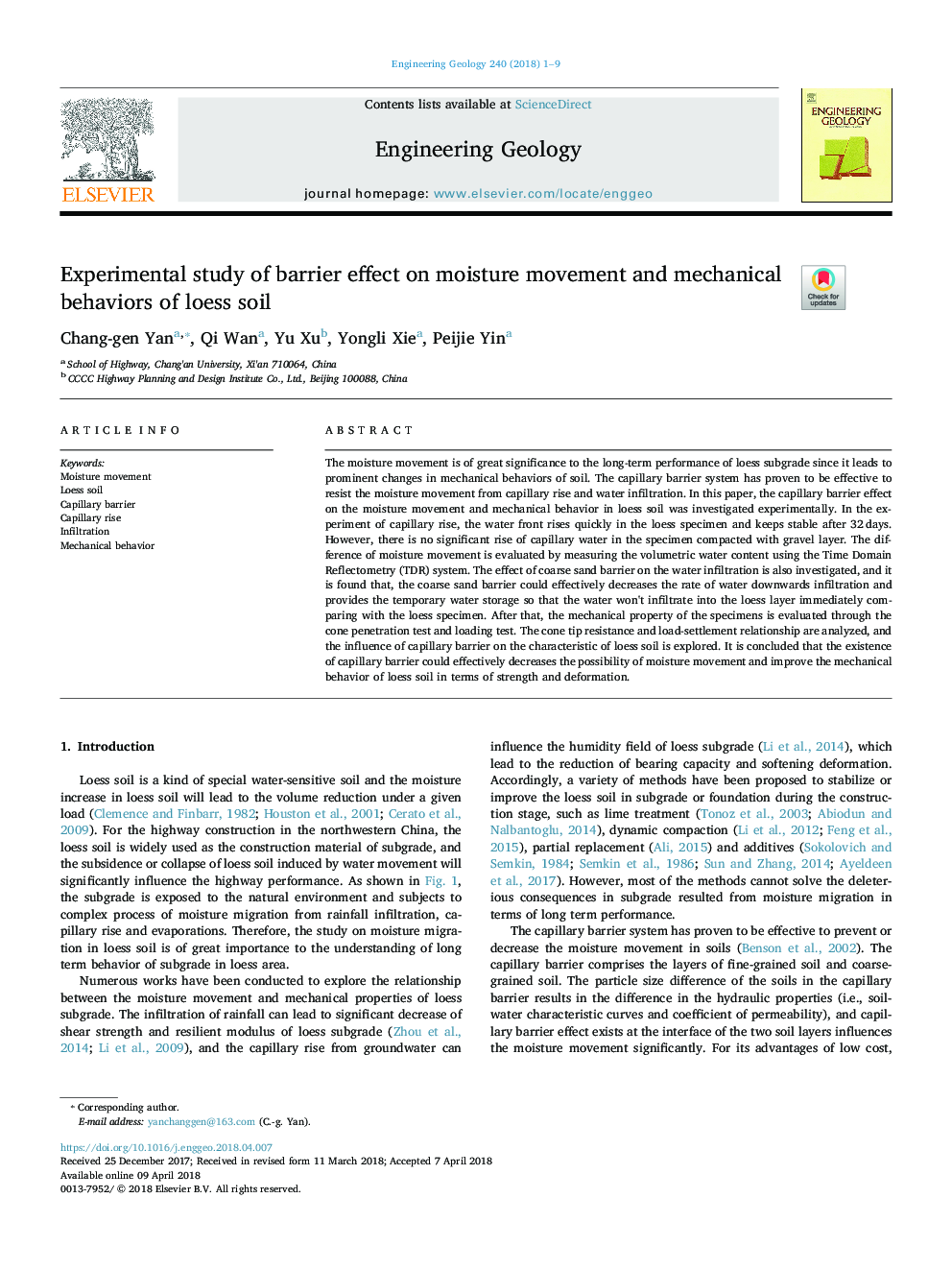| Article ID | Journal | Published Year | Pages | File Type |
|---|---|---|---|---|
| 8915850 | Engineering Geology | 2018 | 9 Pages |
Abstract
The moisture movement is of great significance to the long-term performance of loess subgrade since it leads to prominent changes in mechanical behaviors of soil. The capillary barrier system has proven to be effective to resist the moisture movement from capillary rise and water infiltration. In this paper, the capillary barrier effect on the moisture movement and mechanical behavior in loess soil was investigated experimentally. In the experiment of capillary rise, the water front rises quickly in the loess specimen and keeps stable after 32â¯days. However, there is no significant rise of capillary water in the specimen compacted with gravel layer. The difference of moisture movement is evaluated by measuring the volumetric water content using the Time Domain Reflectometry (TDR) system. The effect of coarse sand barrier on the water infiltration is also investigated, and it is found that, the coarse sand barrier could effectively decreases the rate of water downwards infiltration and provides the temporary water storage so that the water won't infiltrate into the loess layer immediately comparing with the loess specimen. After that, the mechanical property of the specimens is evaluated through the cone penetration test and loading test. The cone tip resistance and load-settlement relationship are analyzed, and the influence of capillary barrier on the characteristic of loess soil is explored. It is concluded that the existence of capillary barrier could effectively decreases the possibility of moisture movement and improve the mechanical behavior of loess soil in terms of strength and deformation.
Related Topics
Physical Sciences and Engineering
Earth and Planetary Sciences
Geotechnical Engineering and Engineering Geology
Authors
Chang-gen Yan, Qi Wan, Yu Xu, Yongli Xie, Peijie Yin,
